Best Bullet Journal Mood Tracker Ideas for 2024
We may earn a small commission for purchases made through affiliate links in this post. For more information go to our Privacy Policy.
Did you feel happy or sad most of the time last month? Were you productive or unproductive? Using a bullet journal mood tracker throughout the month provides invaluable information and benefits regarding your mental health (and possibly even your physical health).
We all have good days, and we all have bad days. Do you want to know if you have more of one than the other? The easiest (and most fun) way to keep track of your emotions on a daily basis is with a bullet journal mood tracker. Track your happy days as well as your off days to see if you have mood patterns or just for documenting purposes.
And maybe you find yourself thinking “why would I track my moods?” or “what is the point of a mood tracker bullet journal?” I get it! I didn’t necessarily think to track my moods right away either, but I’m so glad I did – and here’s why.
Why Track Your Moods?
It can be so easy to get caught up in the spirit of the day, particularly when it’s a woeful one. When that happens you likely lose sight of the bigger picture, right?
If you find yourself falling into a bad mood that lasts all day, a mood tracker can be a good way to focus more time and energy on creating a positive mood.
A More Accurate Big Picture
A mood tracker in your bullet journal will help you have a more accurate picture of your attitude so you know what’s going on and see those emotional patterns over time. That way you can stop letting your emotions control you so easily and be more intentional about how you respond to them.
If you’re anything like me, you will likely find that what you thought was going on with regards to your mood doesn’t exactly align with the data you receive from your real time tracking.
If you expect to see all of one color, (or even a whole bunch of different colors,) on your tracker at the end of the month, you may be surprised. You may see that the primary color on your tracker is different than you expected, and that’s useful information going forward.
For example, if you feel like your bad days take over the month but then see that you have more good days than bad days, it helps give you some perspective.
Further, taking a regular assessment of how you’re feeling may also yield interesting results regarding your emotions and determining what a good day is from a bad day. You can then use that information in a way that makes a positive difference in your life and helps you feel happier.
Mental Health Benefits
In addition, tracking things that are mentally or physically happening for you could help you to identify true emotional, mental, or physical problems that need to be addressed. For example, a mood tracker could help you identify anxiety triggers, depression, panic attack triggers, or symptoms of other issues.
Bujo mood tracking might also help you identify stressors or anxiety triggers that you haven’t been able to identify before. For example, you might finally recognize that feeling you have before every meeting with your boss and be able to take some action to calm yourself and feel more relaxed and prepared.
And one of my favorite ways to use a mood tracker is when you are talking to a professional about your mental or physical health concerns. When you do that, you’re able to skip talking in generalities and instead use specifics that can help you both identify and discover tools to cope with the issues that you are facing.
In this sense, mood tracking in a bullet journal can help you identify and track toxic patterns that you wouldn’t notice otherwise. That will enable you to be able to change them over time, but awareness is the key.
What is a Bullet Journal Mood Tracker?
Ok, so now that we know the why, it’s time to talk about the what. What exactly is a mood tracker in a bullet journal?
Simply put, a mood tracker is a spread in your bujo where you document the mood you were in each day. It’s similar to the way you would track how much sleep you get each night in a sleep tracker.
You set up a page and track whether you’re feeling happy, sad, angry, tired, productive, bored, etc. You can choose what moods you want to track then add a color key and use it to fill out your tracker each day.
As with everything in your bullet journal, set it up to work for you. You may want to track certain emotions that others don’t feel the need to track. Just set it up to match the feelings that mostly apply to you.
Doing this all in a bullet journal provides an easy, fun, and creative avenue for improving your mental health.
Related Post: The Best Bullet Journal Sleep Trackers to Try in 2021
There is a huge variety in the designs you can create to track your moods. Now it’s time to check out some of the great ideas for creating a mood tracker in your bullet journal If you’re looking for a fun and creative way to track your mood, consider using a bullet journal. This system can be easily customized to fit your needs, and there are many different mood tracker ideas that you can try.
Bullet Journal Mood Tracker Ideas
Now here’s the fun part – seeing different mood tracker examples in action! I hope these real-life examples inspire you to create your own beautiful mood tracker for your bullet journal.
Monthly mood trackers can be a great way to keep track of your emotions. They allow you to see your mood patterns more clearly and they can also help you notice any changes in your mood. If you’re looking for creative bullet journal mood trackers ideas to add to your bullet journal system, this is one of the best options to try.
The Icing on Top
If you love donuts, this tracker idea is for you. The icing on top is the part that you color to indicate your mood. Create a color code at the bottom so you don’t mix up. There are so many fun things you can do with this idea!
This is a cute way to track your daily moods. It also requires minimal effort since all that you have to do is color the donut to match the mood. Add sprinkles or decorations if you are feeling more creative.
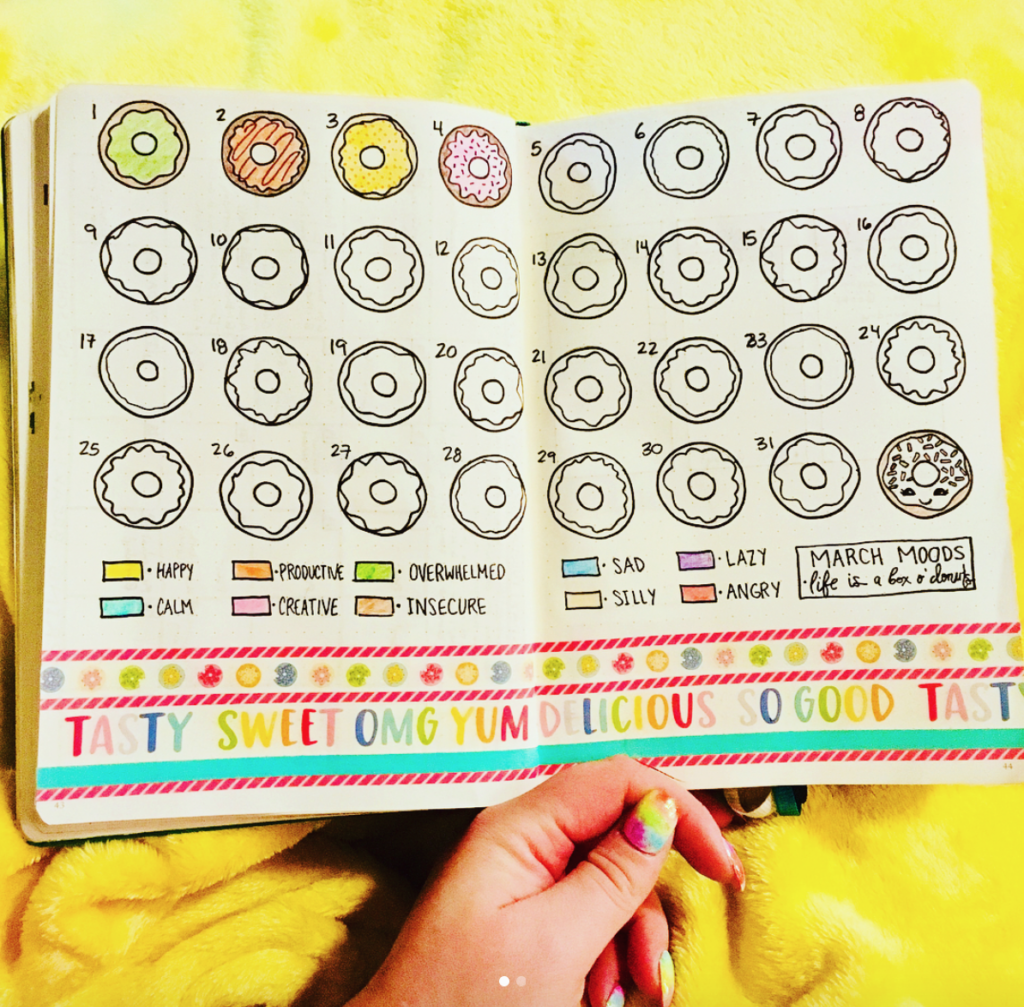
Go Monochromatic
When I think of trackers, I automatically think about going as colorful as possible. This cool succulent design simply uses different shades of green to track different moods in a very cool and beautiful way. I never would have thought of this, which is why I like it so much.
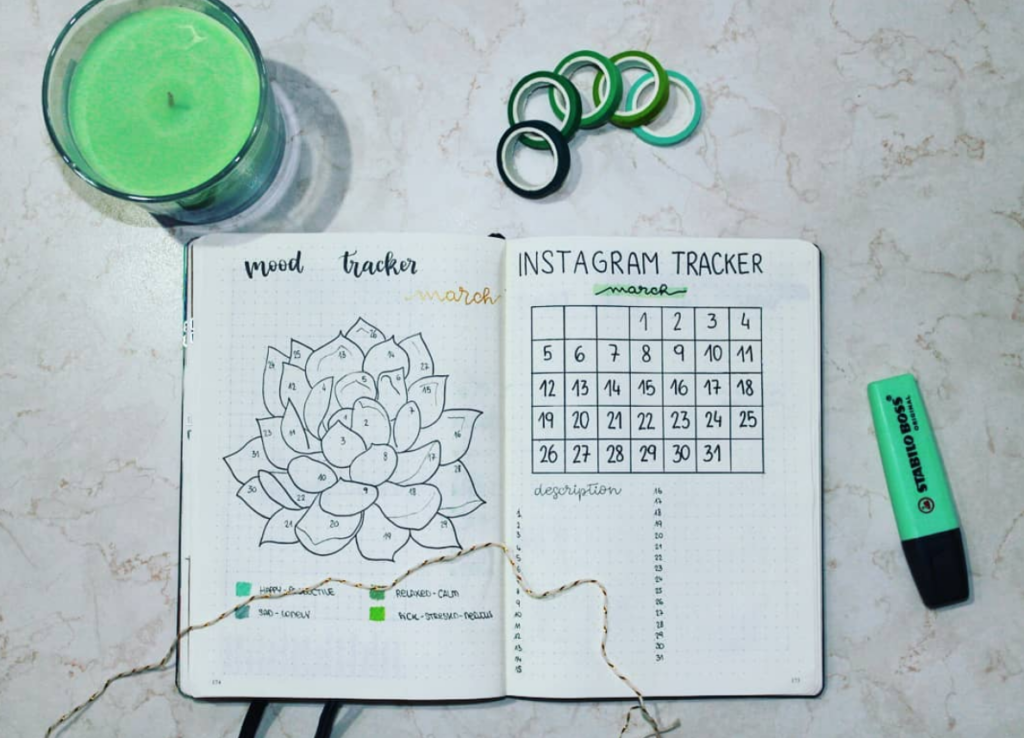
Hot Air Balloon
This particular example uses only 4 colors but the final product will be stunning, and the idea is adorable.

Mood Mandala
I love this idea. It’s so creative! Remember that old compass you used to use in math class eons ago? Pull it out and create enough circles for the month. Then add fun swirls, squiggles, loops, and more to embellish it.
Color one circle for each day of the month, and at the end, you’ll have a really interesting, functional piece of art.
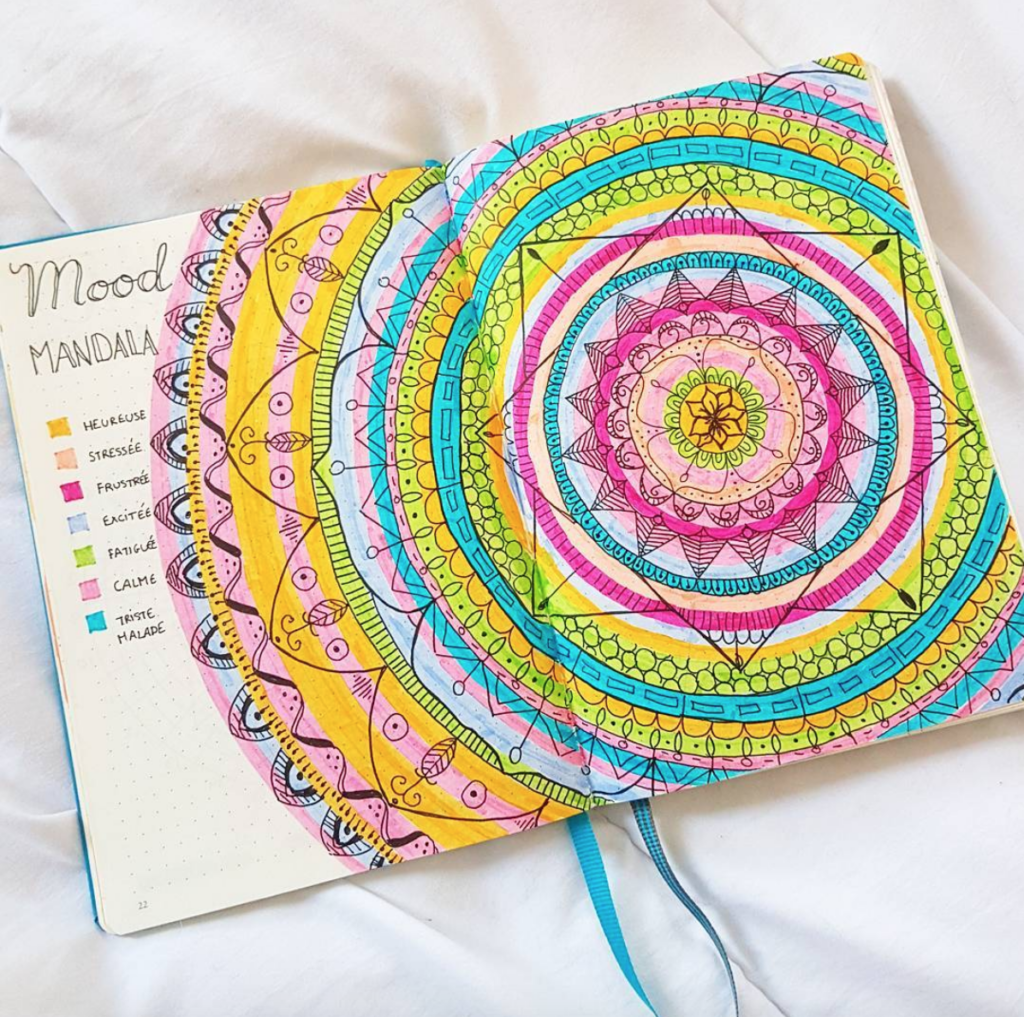
Jars of Hearts
Instead of fireflies, collect hearts in jars and use them to track your moods all month long. It’s fun and playful, which I totally love. You can also customize these jars to fit different themed mood trackers or habit trackers.
Blobs of Color
How about doing something that’s not super defined? Blobs of color flowing out of a bottle will work well. Pick some bright colors, and not only will you track your mood, but you might notice you feel a little happier in general after looking at this. Another cute mood tracker that you can customize in any way you want.

Baby, It’s Cold Outside
Moving from abstract to everyday life, this winter scarf mood tracker spread is clever and so appropriate for those cold winter months!
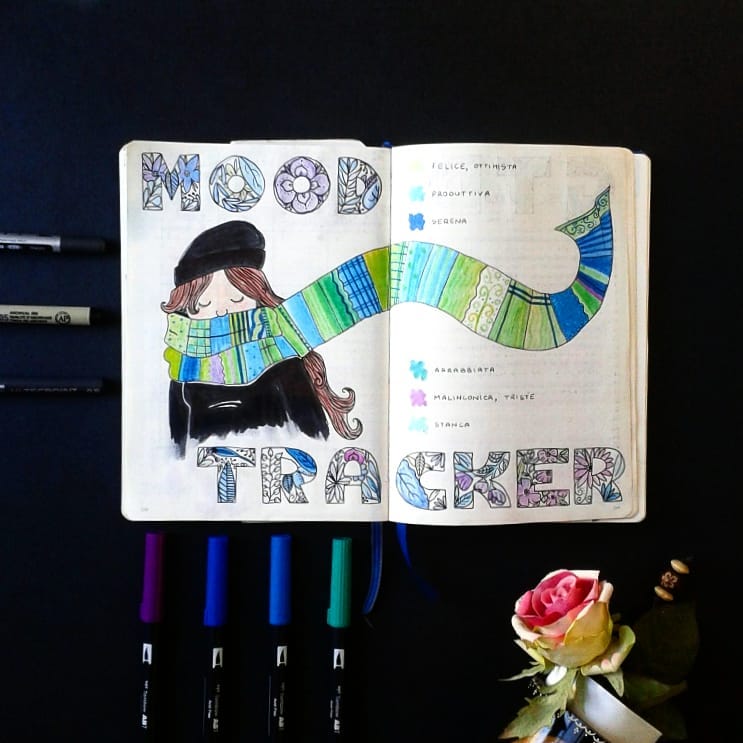
Candy Skulls
Fun, creative, and the final product will look amazing no matter what colors you choose to use. Bonus: it’s super easy to draw so I think even I can make this one!
Very Autumn
Perfect for anyone who loves fall colors and another super simple design to create. You can even add a little more variety to those colors if you want more of a vivid look.
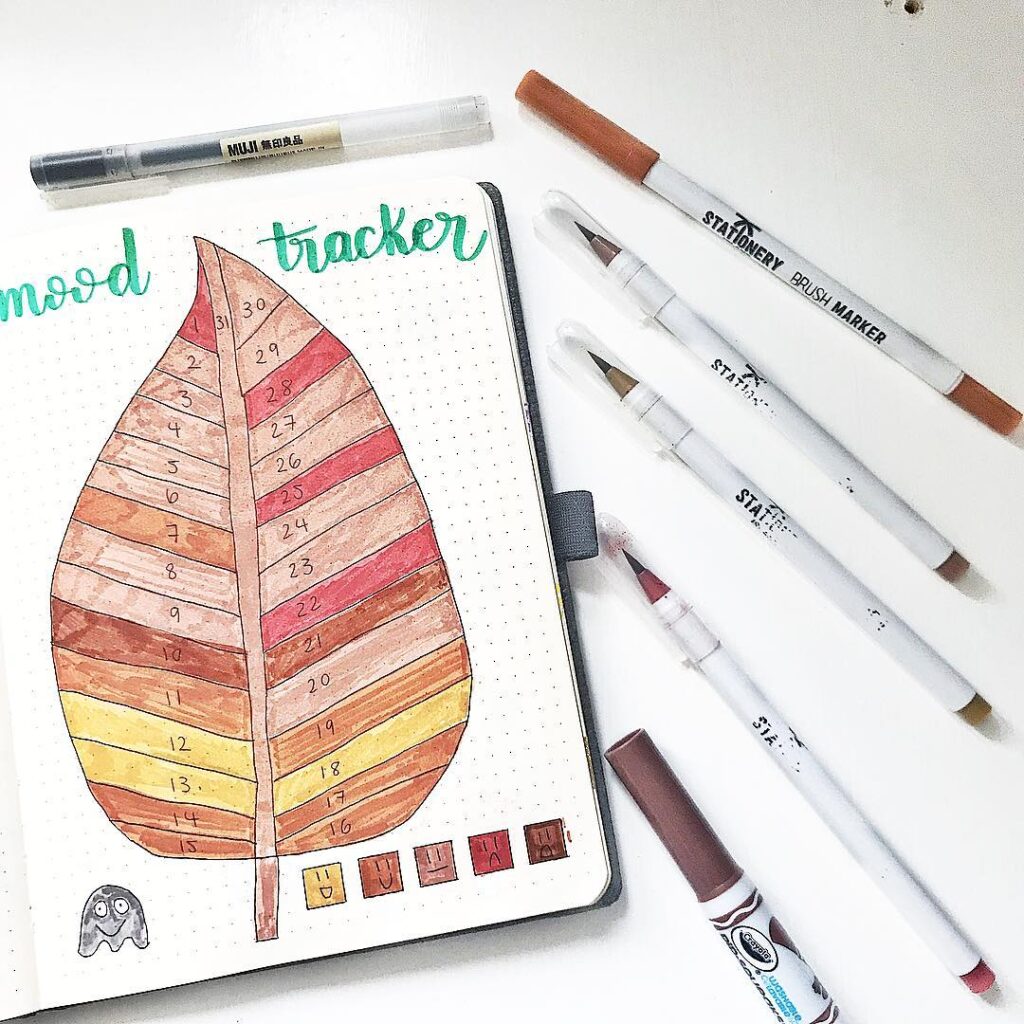
Look Up at the Stars
Space offers awe-inspiring natural colors and designs. Space contains wonders and complexities that your mood tracker can help capture.
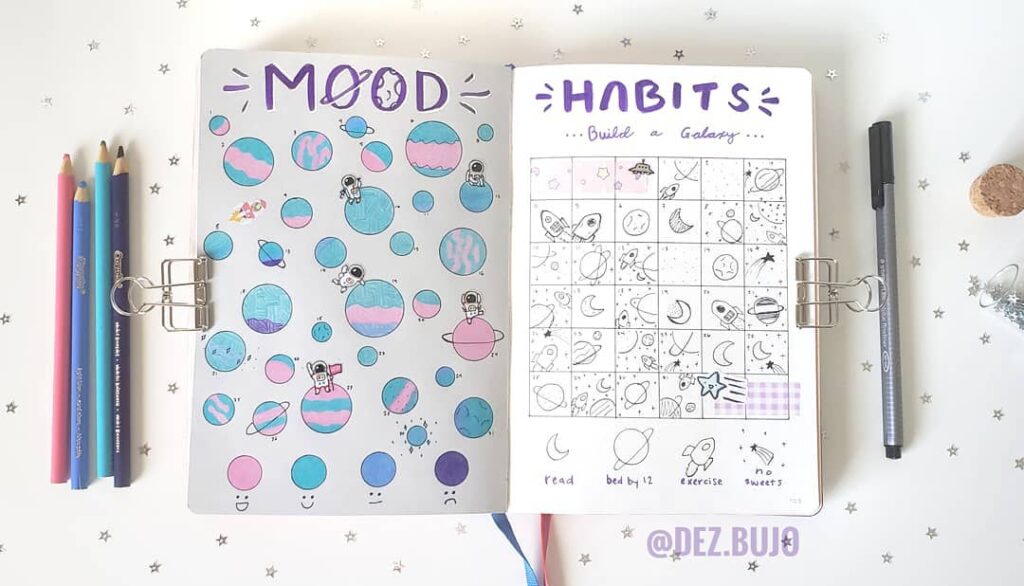
Go Fly a Kite
Here’s another simple design that can yield some delightful results once you have completed the month. And this one has room to grow once you expand beyond 3-4 emotions that you want to track.
Geometric Shapes
Embrace fun and funky. If you want a tracker that doesn’t follow any kind of seasonal theme, geometric shapes may just be the right fit.
Mood charts are a great way to keep track of your mood throughout the day. You can use a bullet journal to create your mood chart, and it’s a really easy process.
Sunflower Mood Tracker
Here’s another mostly monochromatic design idea. Sunflowers have a way of adding some sunshine to your day.
Mood tracking is an excellent way to keep track of your mental health. It’s also a good idea for people who would like to understand their emotions better. If you’re looking for ideas on how to use a bullet journal for mood tracking, here are some of the most popular spreads that you can try.
Bullet journals are highly customizable. You can use them for keeping track of anything you like, and mood tracking is no exception. If you’re looking for a fun way to keep track of your mood, try using one of these bullet journal ideas. They can be used to track your emotions throughout the month, your emotional health, your menstrual cycle, your mood in relation to events, etc.
You can use a bullet journal spread like these ones to keep track of what you’ve been feeling over the course of a specific time period (e.g., week, month). Keeping a mood tracker in your bullet journal system will give you a better understanding of your mood cycles and help you notice patterns.
I hope you can tell from this wide variety of bullet journal mood tracker ideas that the sky is the limit when it comes to choosing your design. Get creative and even match your design to your monthly bujo theme, if you have one. Or keep it simple, abstract, or minimal.
The only thing that really matters is that you use it each day!


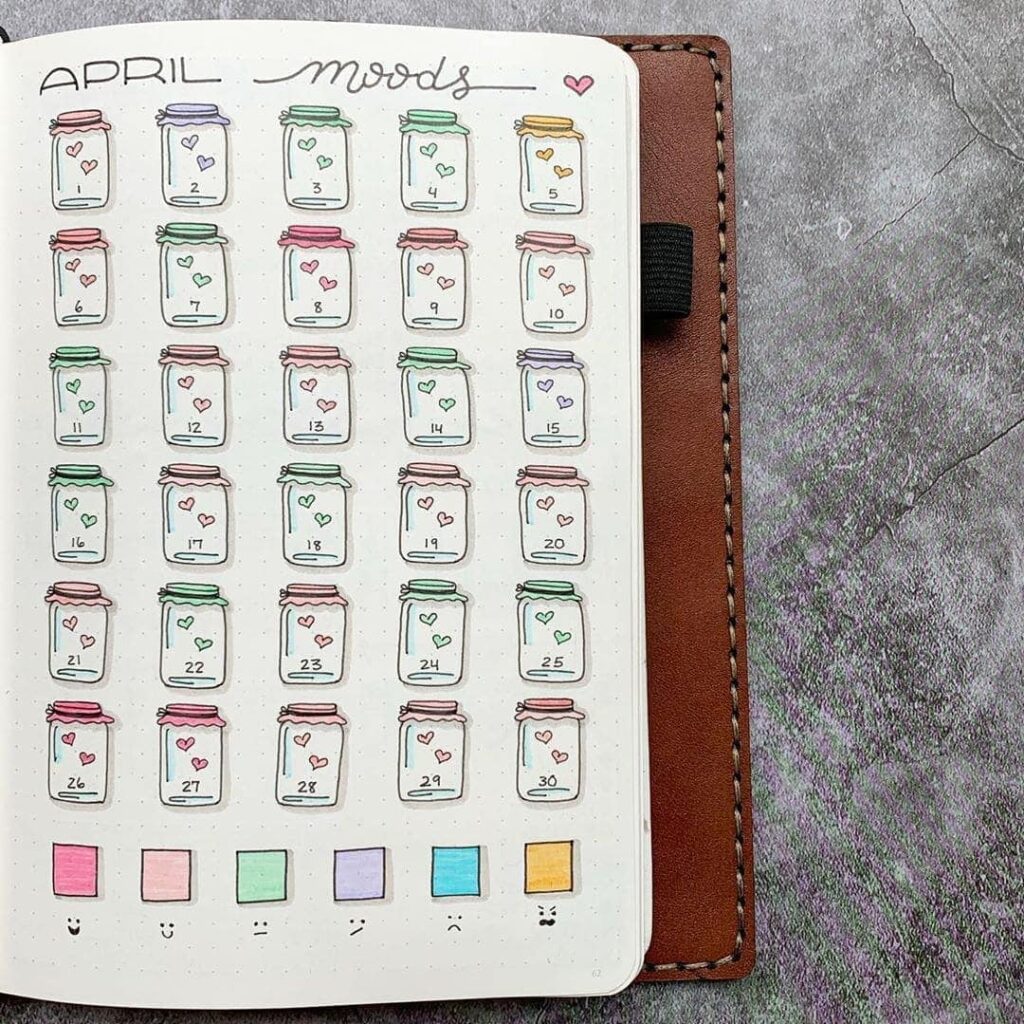
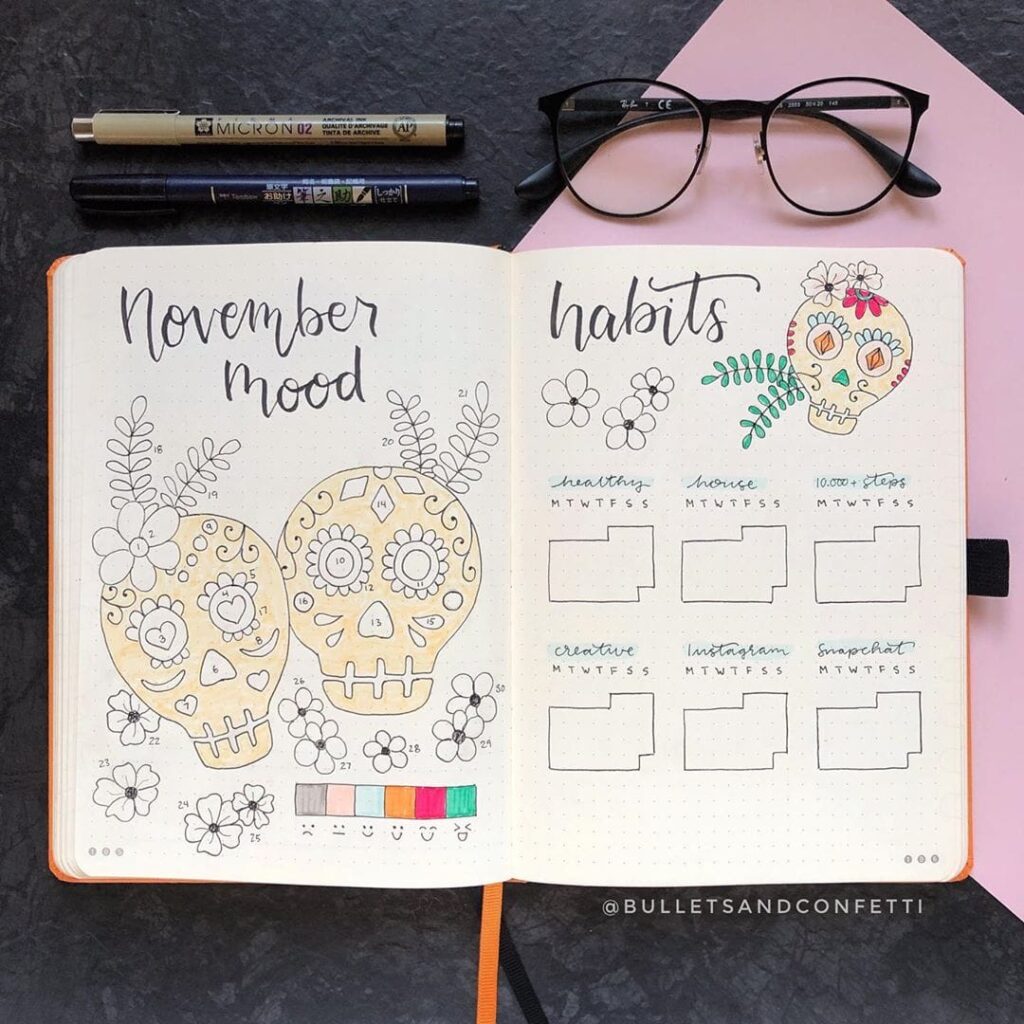
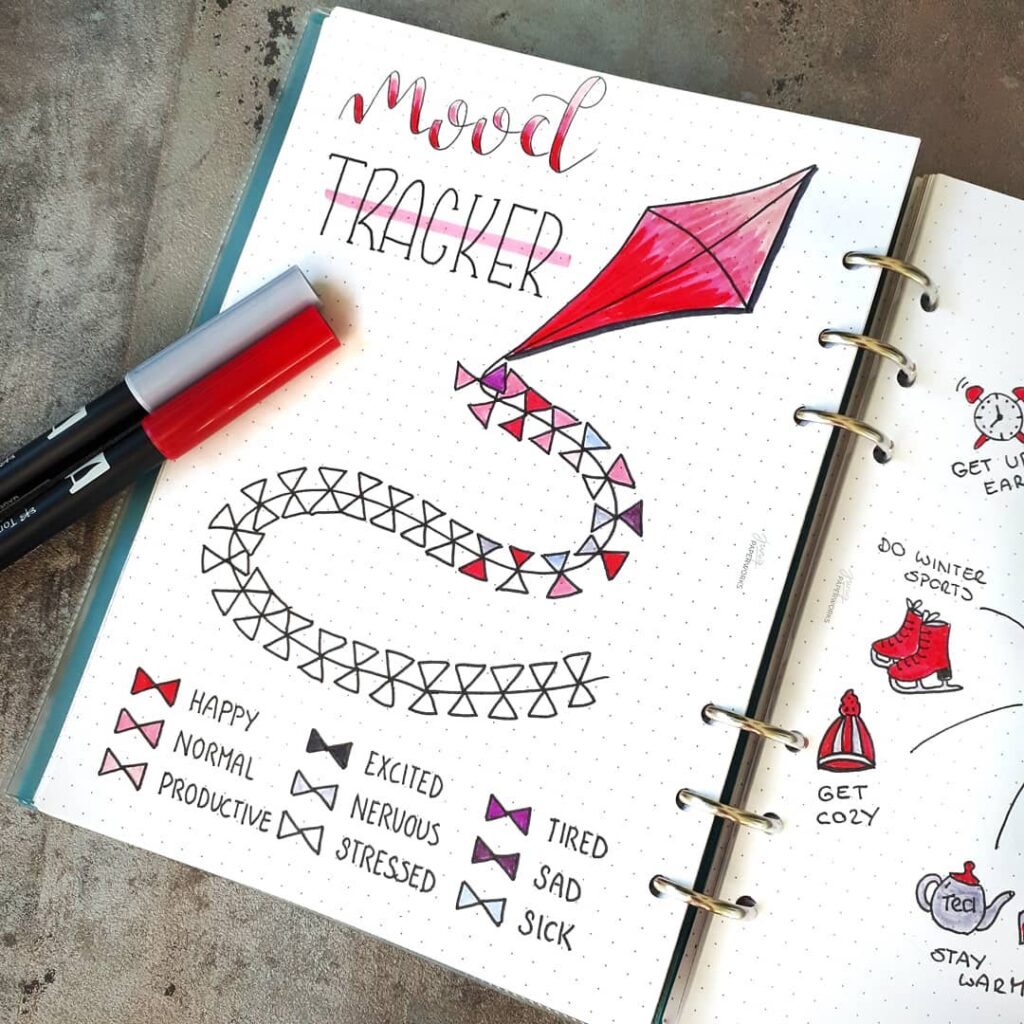

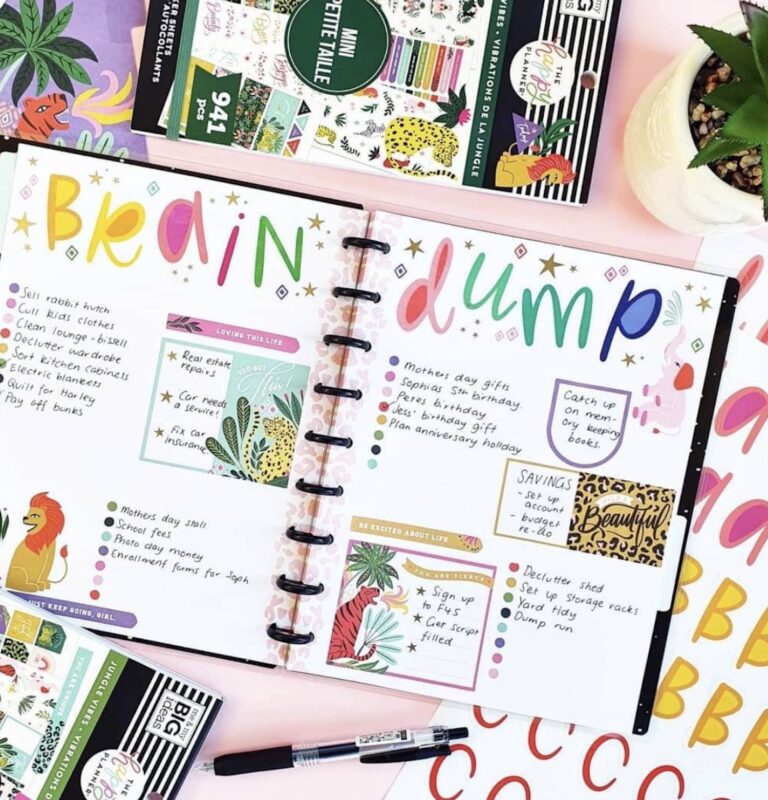
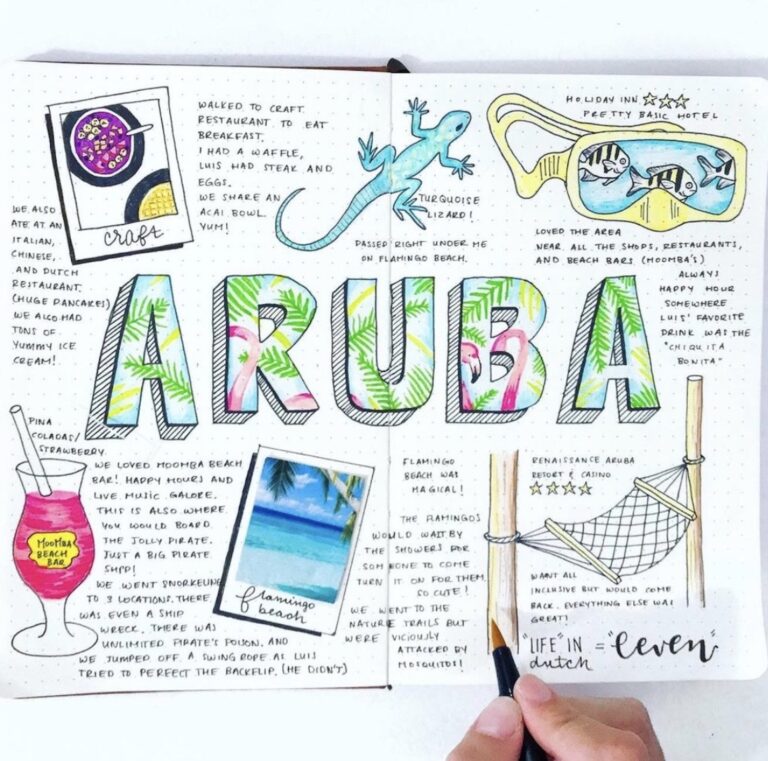

I’m just looking into journaling and I love to doodle/draw/color but I’m terrible at it. You have some very amazing ideas I love. Thank you so much for sharing your content!!!
Do you have any suggestions for someone terrified to put pen to paper because they fear drawing a flower but it looking like a snowman in summer? All the journals I look to for ideas appear to be “perfect”!!! How did you become so eloquent in your doodling??
Thank you again for sharing your work and Ideas.
Hi Sam,
As a former art teachers, my go to response is just to keep trying and keep practicing. People who play sports couldn’t make the basket every time they shot when they first started. Kids take a few years to learn to write well (drawing is a skill very similar to handwriting).
Tracing is a great way to get a feel for the lines and the form. Trace your favorite images.
Practice on scratch paper first.
Also know, that mistakes happen and usually they are the best part of a design after I have taken a few minutes to think about how to fix them. Drawing, scrapbooking, card making, planners. When you think through how to fix a mistake the creativity really lets loose. They definitely turn into “happy little mistakes”.
Rhoda